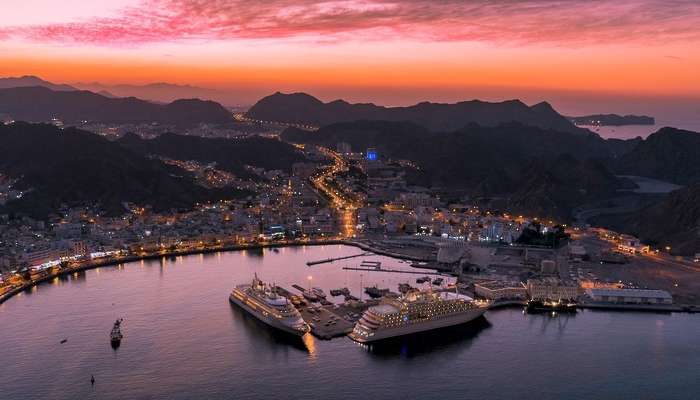
Muscat: The Ministry of Economy has praised His Majesty Sultan Haitham bin Tarik for the positive results achieved by the Tenth Five-Year Development Plan (2021-2025).
These results enhance confidence in comprehensive and balanced development and confirm the Sultanate of Oman's move towards diversification and sustainability in light of the continuous development witnessed by the national economy and the improvement in financial and economic indicators in accordance with the ambitions of Oman Vision 2040.
Dr. Nasser Rashid Al Maawali, Undersecretary of the Ministry of Economy,, emphasised that the Royal directives and concerted efforts of all parties involved in implementing the plan have enhanced the success of strategic objectives, notably achieving the targeted growth rate of the gross domestic product in the tenth plan, consolidating the economic growth focus on non-oil sectors, the radical shift in the financial situation towards sustainability, and the rise of the Sultanate of Oman's credit rating and position in international competitiveness indicators.
The continuous progress in the economic diversification strategy and the commitment to accelerating the implementation of the development programmes and priorities in the Oman Vision 2040, starting with the Tenth Five-Year Development Plan (2021-2025), represents a pillar for continuing to achieve sustainability targets in the Eleventh Five-Year Development Plan (2026-2030).
The aim is to support diversification trends, increase sources of income, and achieve positive results during the next development plan, which are reflected in various national priorities and indicators of economic growth and competitiveness.
He explained that the implementation period of the Tenth Plan witnessed an acceleration in the completion of a number of major projects and the launch of a package of development projects currently underway, which contribute to diversifying production and export structures, expanding the size of the economy, increasing job opportunities, and attracting investment in various governorates.
These projects include Sultan Haitham City, which is the first of the future cities system in the Sultanate of Oman, and the expansion of the system of economic, free, and private zones, among the most important of which are the integrated economic zone in Al Dhahirah Governorate and the Al Rawdah Special Economic Zone in Al Buraimi Governorate. During the Tenth Five-Year Plan, development spending was enhanced on various service and social aspects, the health system was expanded, new strategic road projects were implemented, road maintenance was carried out, and the school and higher education system was strengthened in various wilayats and governorates.
The Undersecretary of the Ministry of Economy said: "The actual average growth of the Sultanate of Oman's GDP from 2021 to 2024, measured at constant prices, reached 3.4 percent, approaching the annual growth target set in the tenth five-year plan of 3.5 percent.
The actual average growth of non-oil activities recorded 4.1 percent, exceeding the target set in the tenth five-year plan of 3.5 percent, while the growth rate of oil activities reached 2.3 percent compared to the plan's target of 3.5 percent, due to the decline in crude oil production, in accordance with the coordination between the OPEC Plus countries.
He pointed out that financial and economic indicators continue to improve during the current year, and that economic growth expectations and the performance of diversification sectors remain positive in the medium term. This reflects the sustainability of economic growth, increased investment attractiveness, and a stable financial situation. Public debt fell to OMR 14.1 billion, representing 34.1 percent of GDP, by the end of the first half of 2025.
He explained that the Sultanate of Oman has confirmed its investment-worthiness rating this year, with Moody's raising its rating from "Ba1" to "Baa3."
This is due to the continuous progress achieved in strengthening the country's financial position, enhancing the efficiency of financial management and public spending, the continued growth of the gross domestic product, and the expansion of strategic projects.
This has enabled the economy to adapt to changes, especially the decline in oil production and the many crises witnessed in the global economic environment.
He pointed out that the cumulative total foreign direct investment continued to rise by 20.6 percent by the end of the first quarter of this year compared to the same period last year, recording OMR30.6 billion.
Non-oil exports recorded a growth of 9.1 percent during the period from January to June of this year compared to the same period last year, reaching OMR3.3 billion. Private sector deposits in the banking sector increased by 6 percent, recording approximately OMR22 billion by the end of June 2025. Total loans and financing increased by 8.4 percent to reach OMR34 billion by the end of last June.